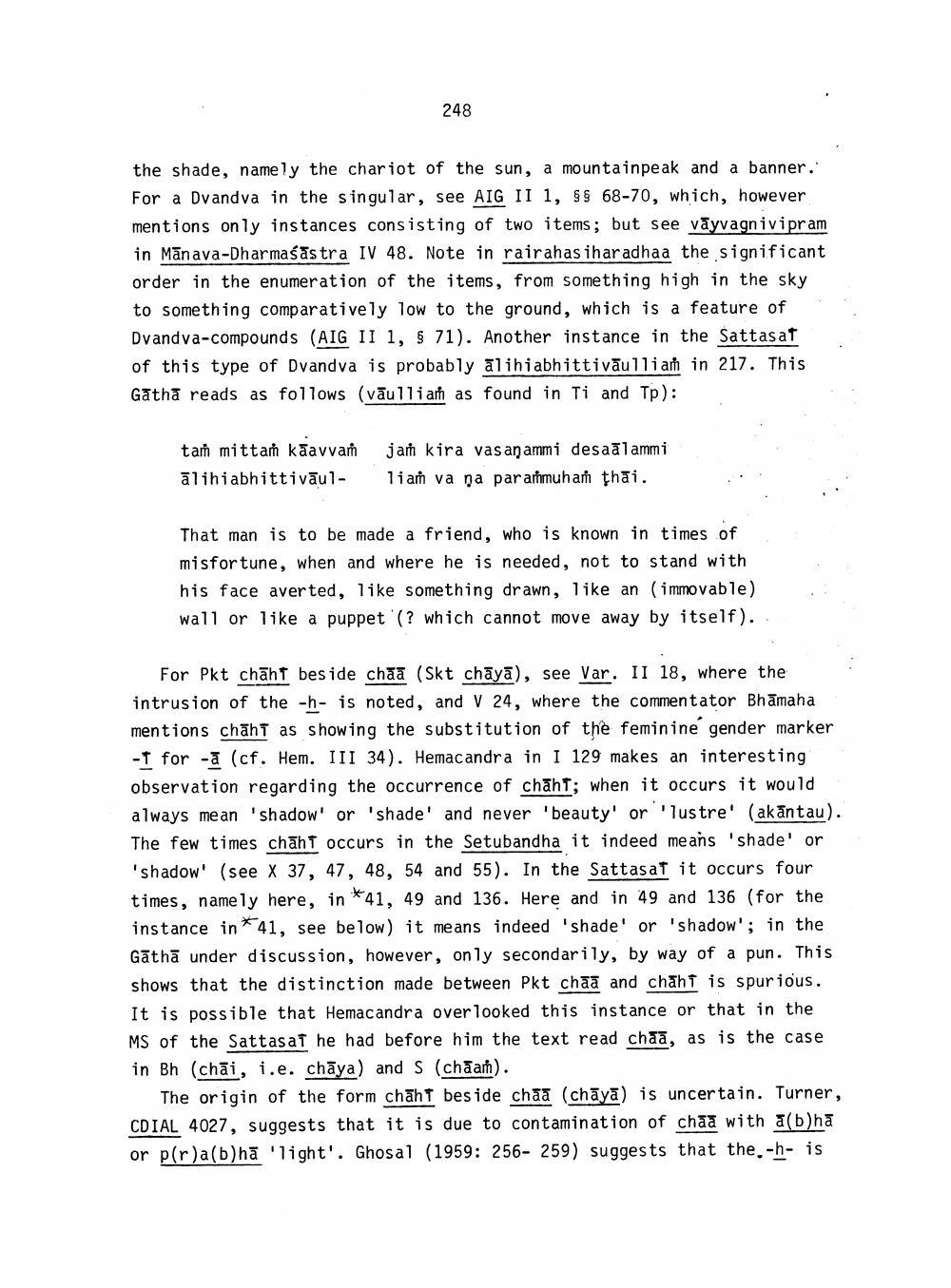________________
248
the shade, namely the chariot of the sun, a mountainpeak and a banner.' For a Dvandva in the singular, see AIG II 1, $$ 68-70, which, however mentions only instances consisting of two items; but see vāyvagnivipram in Mānava-Dharmaśāstra IV 48. Note in rairahas iharadhaa the significant order in the enumeration of the items, from something high in the sky to something comparatively low to the ground, which is a feature of Dvandva-compounds (AIG II 1, $ 71). Another instance in the Sattasaf of this type of Dvandva is probably alihiabhittivāullia in 217. This Gatha reads as follows (vāullian as found in Ti and Tp):
tan mittam kāavvaṁ ālihiabhittivāul-
jam kira vasanammi desaālammi lian va na par ammuham thai.
That man is to be made a friend, who is known in times of misfortune, when and where he is needed, not to stand with his face averted, like something drawn, like an (immovable) wall or like a puppet '(? which cannot move away by itself).
For Pkt chāht beside chãa (Skt chāyā), see Var. II 18, where the intrusion of the -h- is noted, and V 24, where the commentator Bhāmaha mentions chāht as showing the substitution of the feminine gender marker -1 for -a (cf. Hem. III 34). Hemacandra in I 129 makes an interesting observation regarding the occurrence of chāht; when it occurs it would always me an 'shadow' or 'shade' and never 'beauty' or 'lustre' (akāntau). The few times chāht occurs in the Setubandha it indeed means 'shade' or 'shadow' (see X 37, 47, 48, 54 and 55). In the Sattasaf it occurs four times, namely here, in *41, 49 and 136. Here and in 49 and 136 (for the instance in*41, see below) it means indeed 'shade' or 'shadow'; in the Gāthā under discussion, however, only secondarily, by way of a pun. This shows that the distinction made between Pkt chăā and chaht is spurious. It is possible that Hemacandra overlooked this instance or that in the MS of the Sattas at he had before him the text read chaā, as is the case in Bh (chãi, i.e. chaya) and s (chẵan).
The origin of the form chāht beside chaa (chāyā) is uncertain. Turner, CDIAL 4027, suggests that it is due to contamination of chaa with a(b)ha or p(r)a(b)ha 'light'. Ghosal (1959: 256- 259) suggests that the.-h- is




